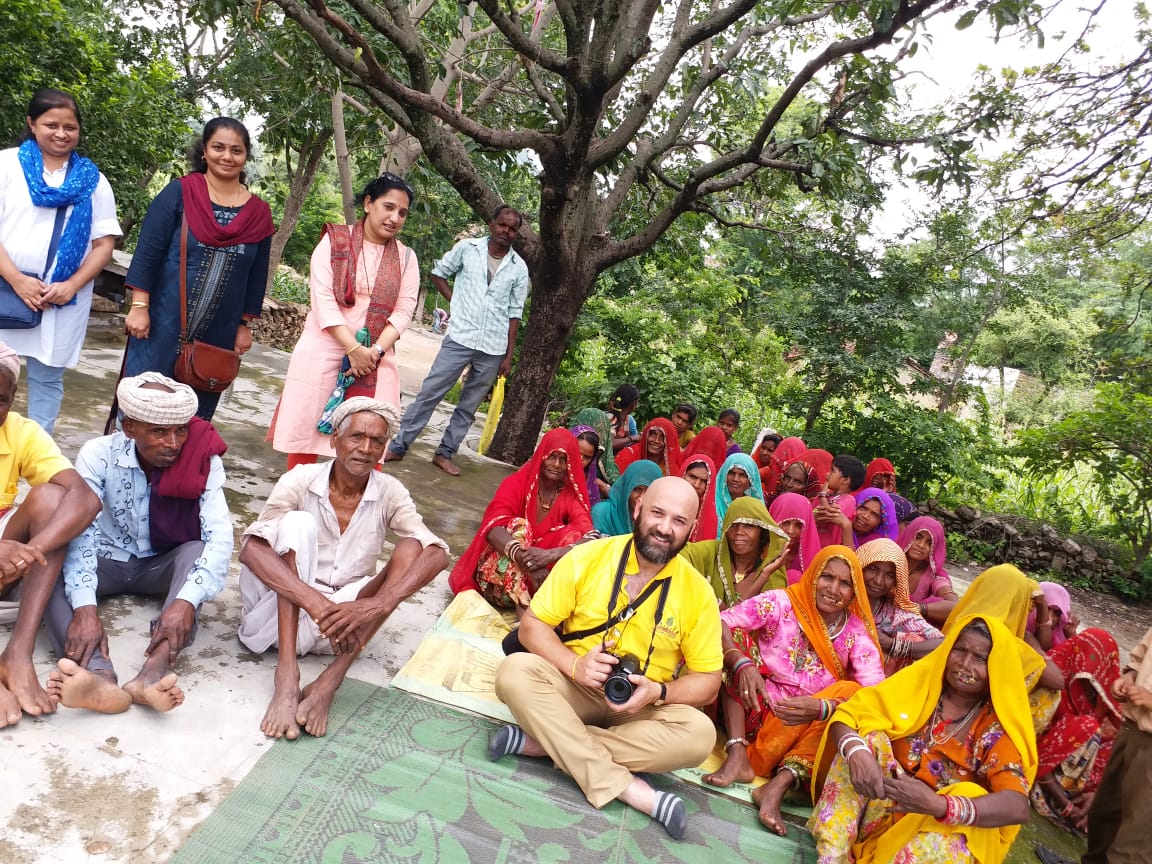

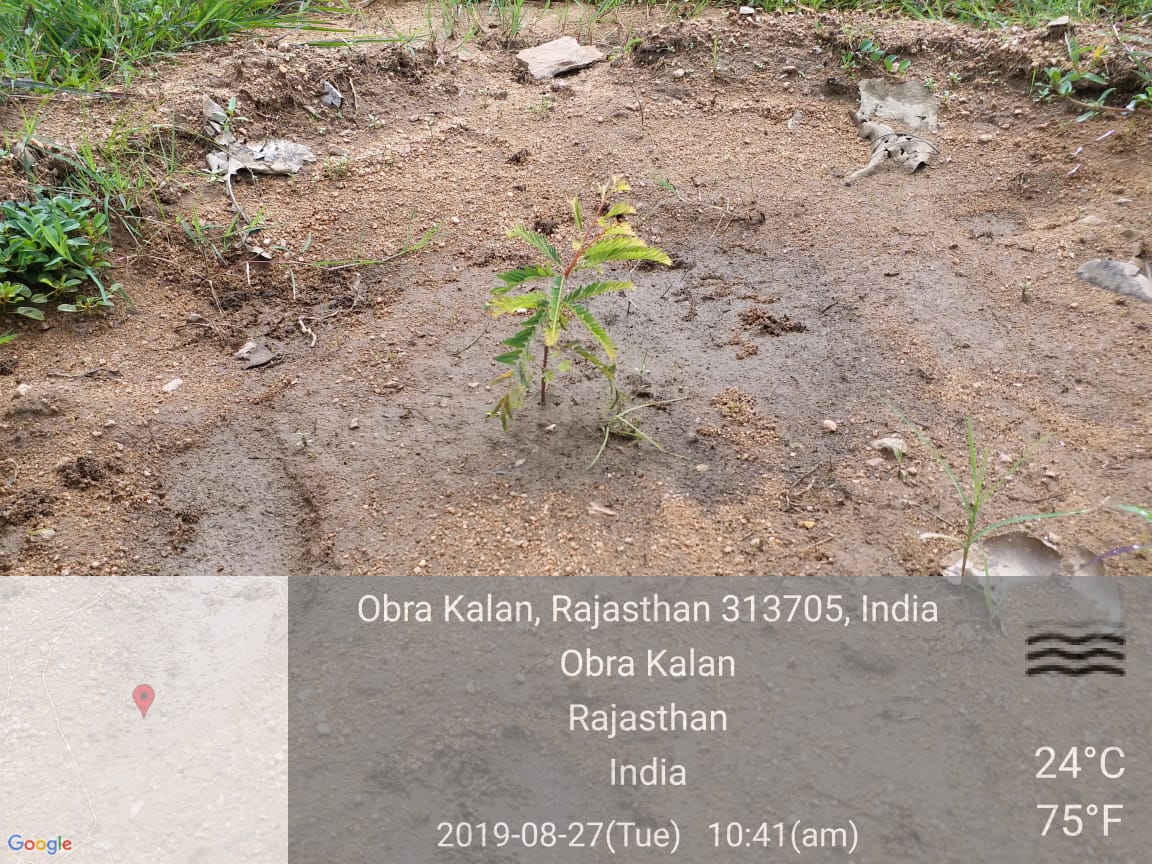
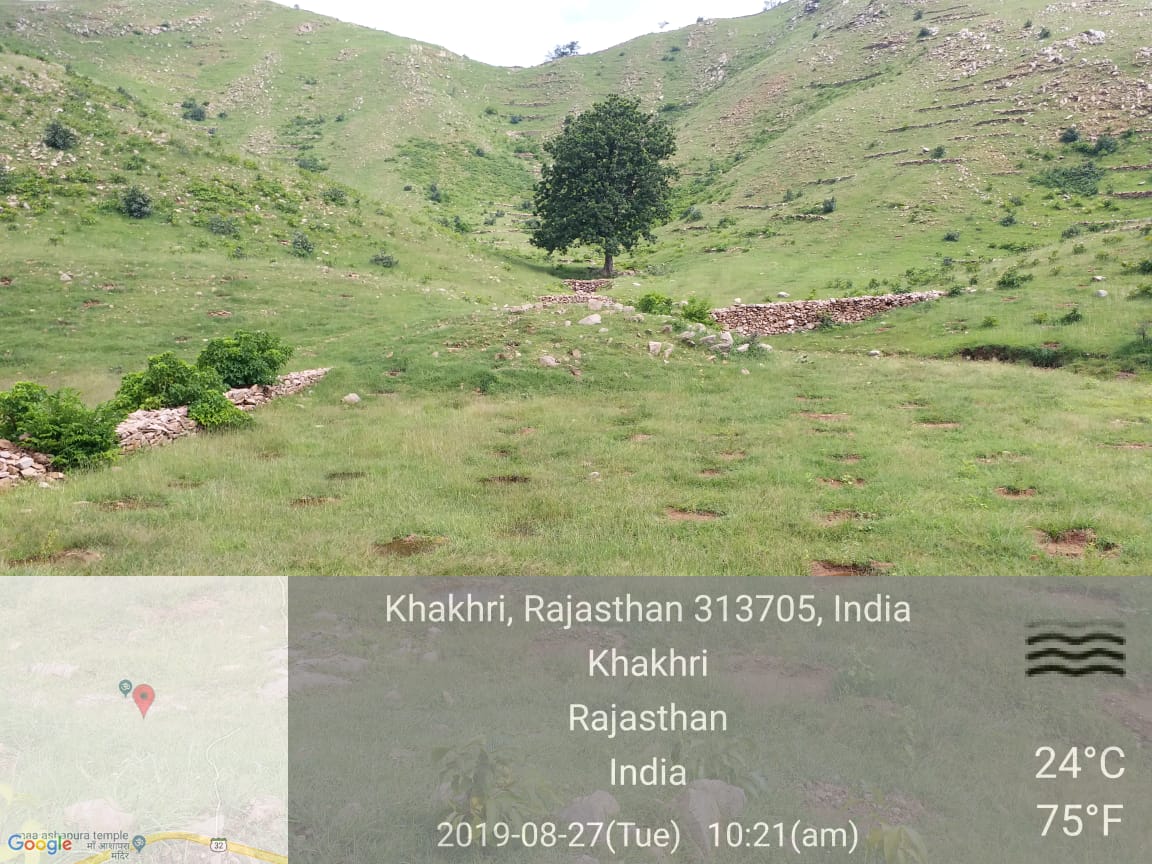


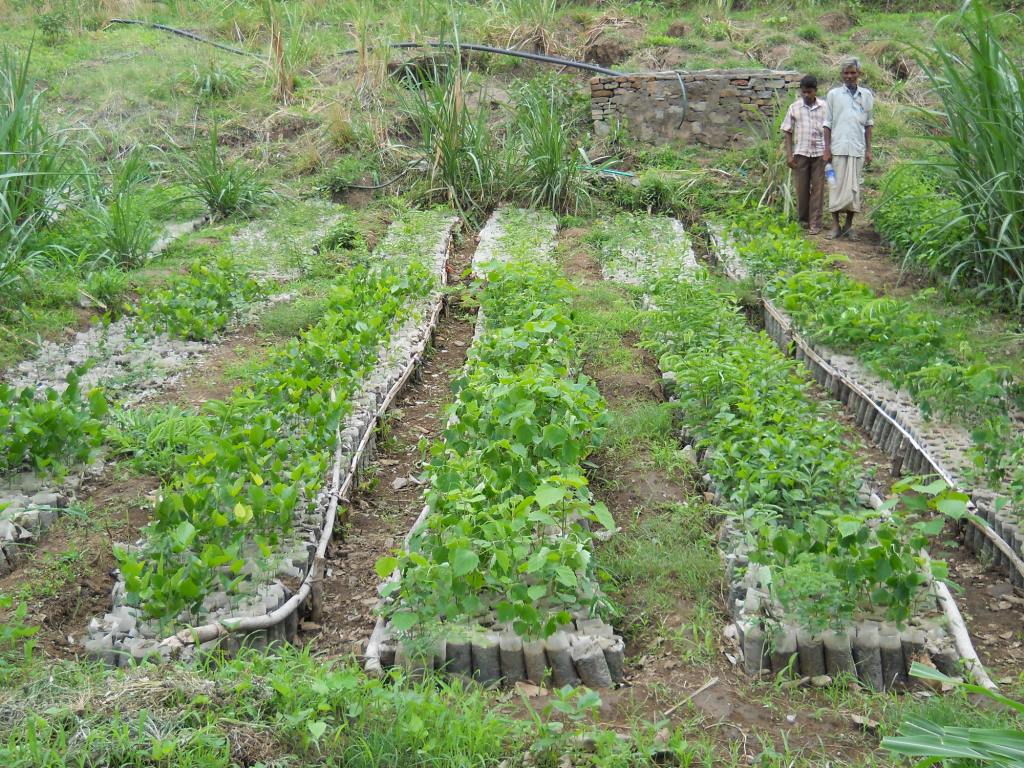
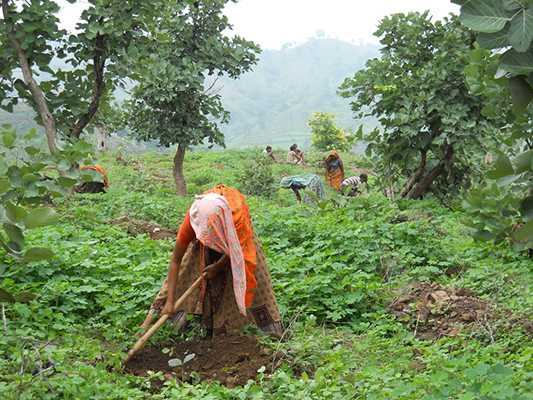
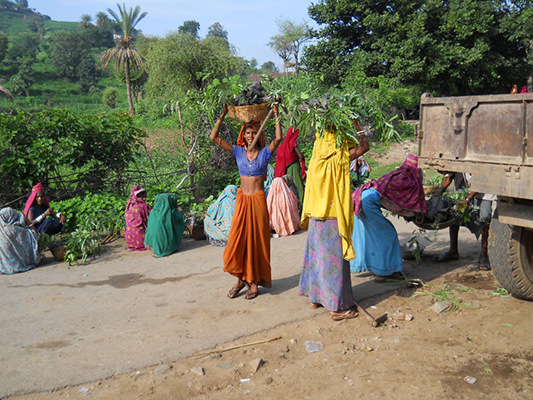
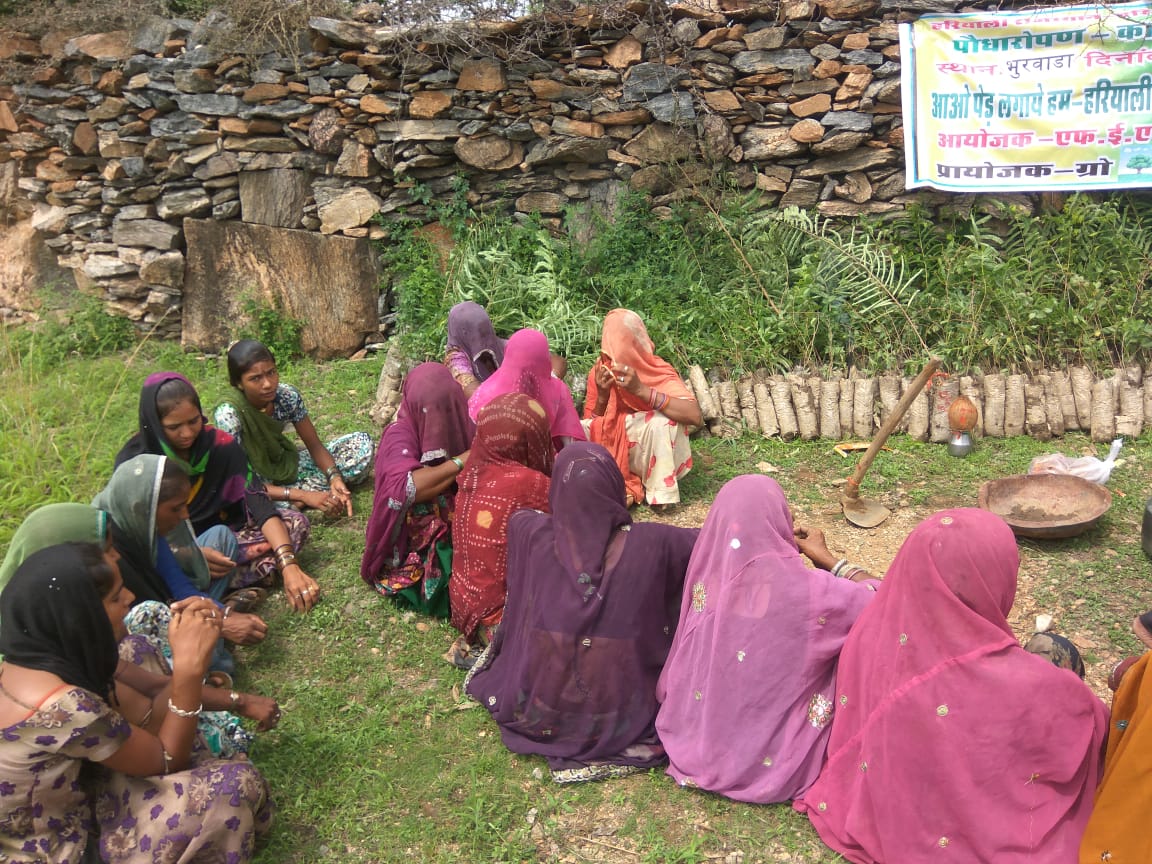
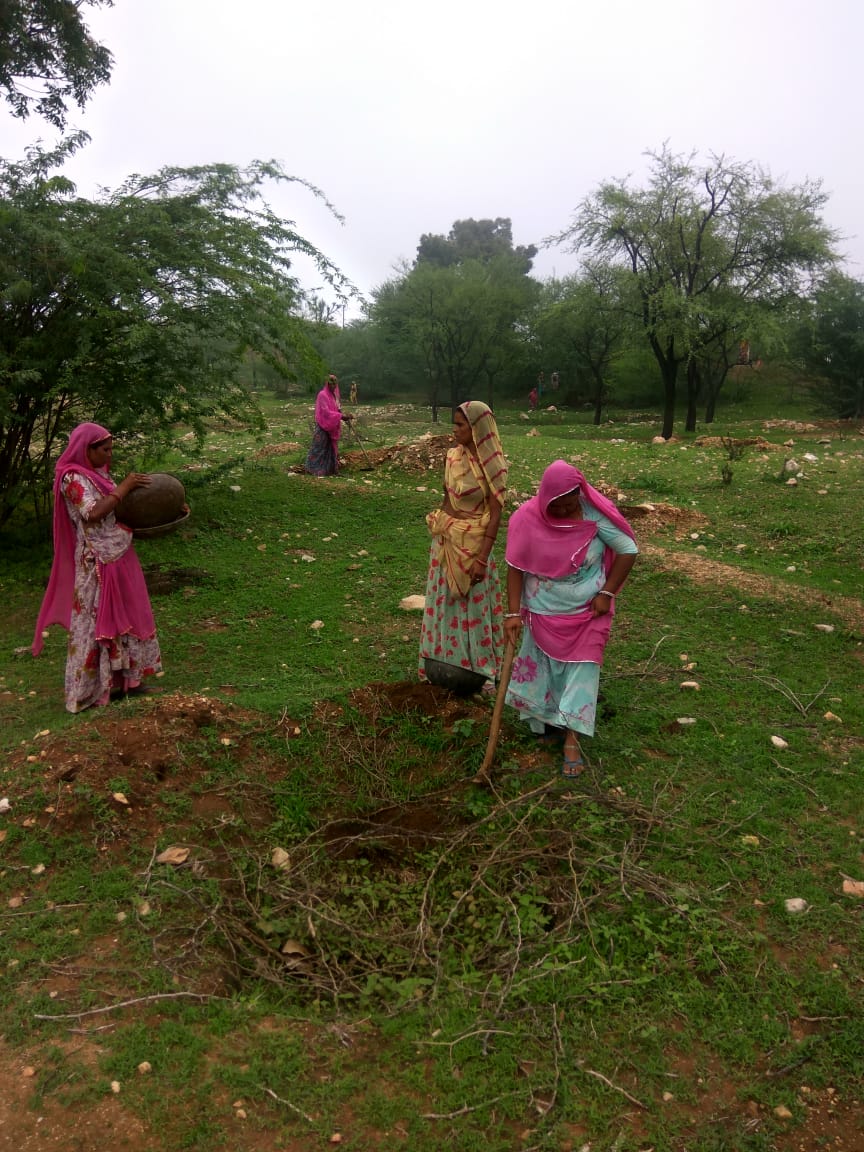
Project Target
0% Remaining
120,000
Trees Planted out of 120,000 Trees

Project Location:
Plantation of local tree species on the community lands among the village ranges of Obra Khurd, Rawaliya Kalan, Jhunjharpura, Jhadoli, Rawaliya Kalan Chak, Dingari, Punawali, Jemli, Obra Kalan, Nalodar, and Rawaliya Khurd, situated at the Periphery of Kumbhalgarh Sanctuary in Rajasthan, India.
Project Aim
The sloth bear is a myrmecophagous bear species native to the Indian subcontinent, that feeds on fruits, ants, and termites. "Sloth bears manage to get natural and cultivated plant food from the ground as well as from trees. Some 22 natural plants and 18 cultivated plant species were observed to be consumed by sloth bears in different seasons in the sanctuary. The higher proportion of plant food in the diet of sloth bears indicates that it is predominantly vegetarian as indicated in some previous studies (Prater, 1971; Johnsingh, 1986; Baskaran, 1990)". [Source: Anil Kumar Chhangani's article "Food and Feeding of Sloth Bear (Melursus Ursinus) in Aravalli Hills of Rajasthan”]
It is listed as Vulnerable on the IUCN Red List of Threatened Species, mainly because of habitat loss and degradation. In India, their distribution is patchy and mostly occurs in areas of forest cover. According to The Livemint’s article - ‘Scientists map sloth bear hotspots in India’, “Due to loss of habitat and poaching, their population has declined by 30-49% over the past 30 years. The authors proposed that the sloth bear could be considered a potential ‘umbrella species’, a species whose conservation allows for the preservation of a much larger spectrum of biodiversity in their habitats. Although no reliable large-scale population estimates exist for sloth bears, guesstimates hint there are 20,000 or fewer sloth bears, and thus less than 10,000 adults, according to the IUCN.” The sloth bear is listed in Schedule I of the Indian Wildlife Protection Act, 1972, which provides for the legal protection of sloth bears. The population of sloth bears grows when they live in high-profile reserves that protect species. Directly managed reserves and surrounding buffer zones could help in the conservation of the sloth bear, hence, such areas must be maintained.
The report by the Foundation for Ecological Security, ‘Assessment of Biodiversity in Kumbhalgarh Wildlife Sanctuary: A Conservation Perspective’ states the presence of the floral and faunal species in Kumbhalgarh forest and their vulnerability. The report also mentions the importance of the community’s awareness regarding the importance of trees and sustainable development in order to eradicate poverty. Importance of tree plantation especially in the arid areas is mentioned by Eduardo Rojas, FAO's Assistant Director-General, to BBC News, where he mentioned the role of trees in halting desertification, contributing to the livelihood of the local community and the ecology of the area. In a developing country like ours, with enormous population pressure, the effects of desertification are far-reaching, leading to great losses evident in the Gross Domestic Product (GDP). Thus, plantation of trees is a major factor to protect natural resources and ensure sustainable development.
Imli (Tamarindus indica), Karonda (Carissa carandas), Bans (Dendrocalamus stricuts), Havan (Gmelia arborea), Awla (Emblica officinalis), Khirni (Wrightia tinctorial), Surel (Holoptelea integrifolia), Jamun (Syzygium cumini), Karanj (Pongamia pinnata), Aam (Mangifera indica), Kachnar (Bauhinia variegate), Khair (Acacia catechu), Neem (Azadirachta indica), Kaliya (Albizia lebbeck), Seetaphal (Annona squamosa), Mahua (Madhuca indica), Kikar (Vachellia nilotica).
The primary aim is to protect the habitat of the sloth bears by preventing the fragmentation of the forest to aid their conservation. The plantation at the periphery will make the buffer zone robust allowing the community to extract forest products to support their livelihood, eliminating encroachment into forest lands and preventing the bears from venturing into human settlements, which in turn will prevent human-animal conflict. The trees will generate employment for the community during nurturing and plantation of the sapling and then after maturity will provide the beneficiaries with forest products and fodder for cattle, and thus will prevent their involvement in poaching activities. They will also improve the soil and water quality, improving agriculture and will improve the overall environment by absorbing carbon and generating oxygen.
| Name of the Company | Number of Trees Planted | Fiscal Year |
|---|---|---|
| CLP Wind Farms (India) Private Limited | 28,670 | 2021-22 |
| HDFC Bank Ltd. | 40,000 | 2020-21 |
| Corning Technologies India Pvt Ltd | 5,000 | 2020-21 |
| Amulya MICA | 15,000 | 2019-20 |
| Croma | 30,000 | 2018-19 |
| Apraava Energy | 30,000 | 2021-22 |
Social Impact of Growing Trees
Community Engagement
Tree planting initiatives often involve local communities, which can lead to greater community cohesion.
Ecological Education
Provides opportunities for community members, especially children, about the importance of environmental sustainability.
Urban Beautification
Trees contribute to the aesthetic enhancement of urban areas, making cities more pleasant and liveable.
Climate Resilience
By improving green cover, tree planting helps make communities more resilient against climate impacts like heatwaves.
Employment Creation
Planting trees creates employment for local community members like planting and maintenance, administrative roles, and more long-term jobs in management.
Wildlife Habitat
Trees provide critical habitats for various species of wildlife. Enhancing tree cover helps preserve biodiversity, which can be an ecological boon for local communities
Copyrights @ 2025 All rights reserved by Pangea EcoNetAssets Pvt Ltd.